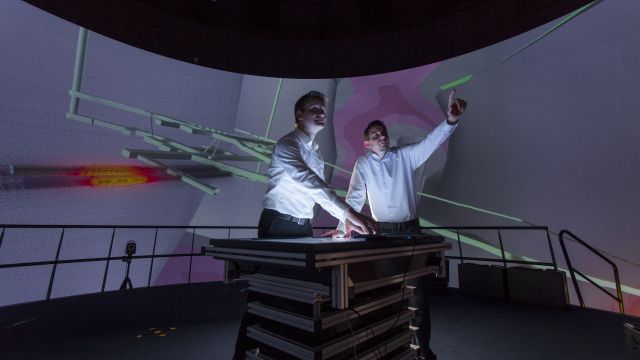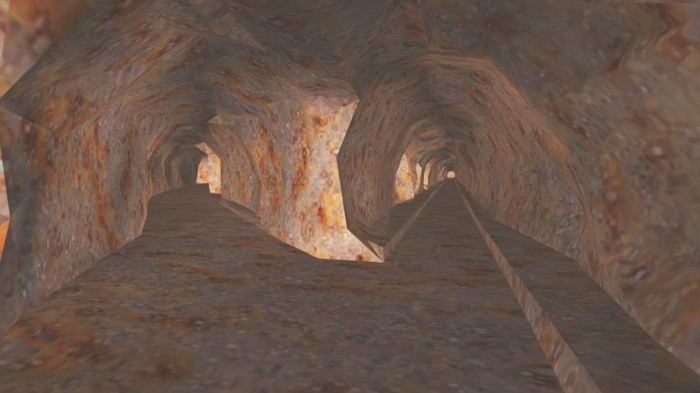
VIRTUS: Virtual underground laboratory
A good part of the research today takes place in underground laboratories. With VIRTUS, the researchers can carry out experiments on the computer. This is particularly interesting for technically complex experiments which extend over a very long period of time. The virtual laboratory makes it possible to better understand the coupled processes in a repository.
To this end, VIRTUS combines various simulation codes (for example, heat propagation, hydraulics and mechanics) with a software platform that allows the three-dimensional visualisation of the geological conditions, mine layout and simulation results. In addition, VIRTUS contains a database with important parameters on host rock types, waste types, and geotechnical components.
Use of VIRTUS for different host rock types
The first prototype of VIRTUS was developed as a virtual underground laboratory in salt rock. In a further subproject, the researchers have now developed VIRTUS for application in argillacious host rock, i.e. clay.
For this purpose, the process parameters specific to argillacious rock had to be added to the software, which is used to calculate the behaviour of the rock under influences such as heat effects or the propagation of pore water pressures. Among other things, the experts were able to access data collected by GRS as part of its own research work at the Swiss Mont Terri underground laboratory. Together with experts from all over the world, GRS has been conducting experiments in the Opalinus clay at Mont Terri since the mid-1990s.
Mont Terri was also chosen as a prototypical application for the visualisation of simulations of processes in clay. For this purpose, not only the geology of the site - i.e. the nature and spatial extent of the clay formation there - but also the drift system of the underground laboratory was reproduced in detail. As a basis for the modelling of the drifts, data from Mont Terri operator swisstopo were used. The latter had determined precisely the drift contours, using a 3D laser scanning method with a resolution of up to a few centimetres. As a result, the visualisation in VIRTUS now shows almost realistically the surface structures of the individual drifts.
The geological model of the underground laboratory is used for the simulation of experiments which GRS is currently performing at Mont Terri together with other institutions. These so-called large-scale heating experiments look at how the heat emanating from the radioactive waste - in the experiment, electric heaters are used for this purpose - spreads through the surrounding rock. The knowledge about heat propagation is important because the rock may only heat up to certain temperature limits in a repository in clay - if these were to be exceeded, a potential site would not be suitable and thus also not licensable.
The simulation of such experiments in VIRTUS offers a number of advantages. For example, the visualisation of the results of real experiments in 3D makes it easier to interpret them, even for experts. For example, inhomogeneities in the host rock, which lead to a non-uniform heat propagation, can be more easily recognised. On the basis of experimental data, it is also possible with little effort to calculate and visualize in VIRTUS variations in the real experiment - e.g. changes in the heat output of heaters or their distance from each other. Finally, VIRTUS allows the experts to identify existing knowledge gaps more easily and quickly by analysing existing results. This makes it easier to plan the experiments needed to close these gaps as effectively and cost-efficiently as possible.
VIRTUS as a tool for the search for a repository
However, VIRTUS does not only offer added value to researchers. It can also be used for planning and optimising repositories. With VIRTUS it is possible to design easily and quickly realistic virtual repositories complete with drift systems, with the option to vary their size and host rock type. For example, this way it is possible to test whether a geological formation provides enough space for a repository in which the planned waste quantities can be stored without exceeding e.g. the limits for the temperature of the particular host rock type. This could e.g. make VIRTUS useful in the selection process for a repository site if it is necessary to select a particular one from a number of potential sites to be explored further.
In addition, VIRTUS also helps with the involvement of the public in the search for a repository. The visual representation of the simulations also allows laymen to better understand the complicated processes that take place in repositories. VIRTUS can therefore also be an important aid when involving the public in the search for a repository.
